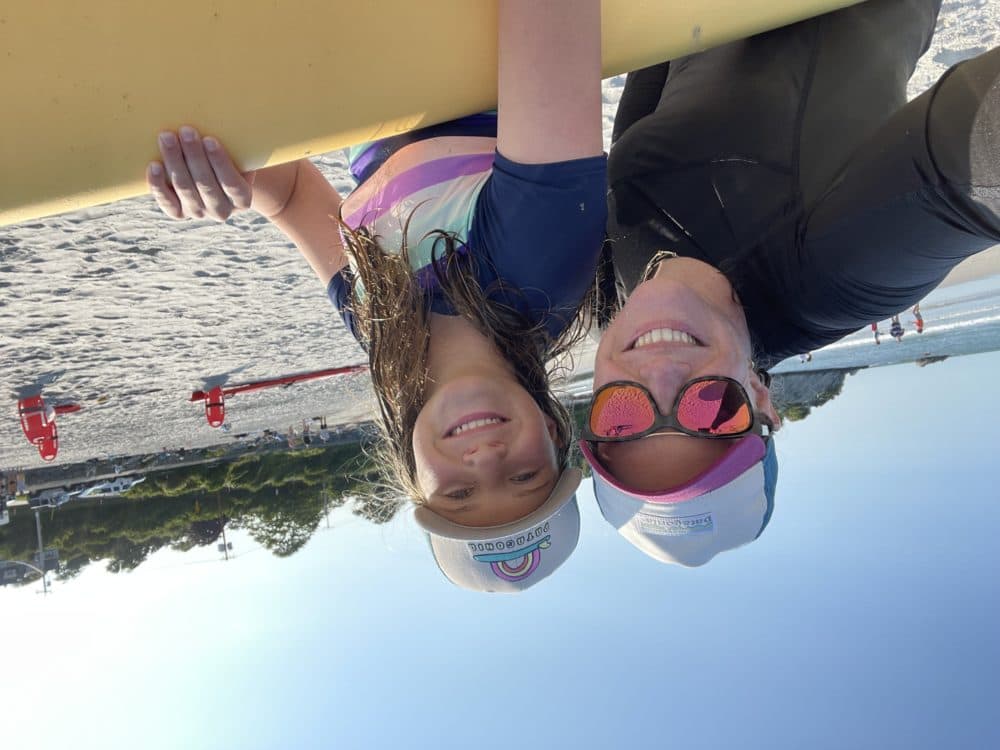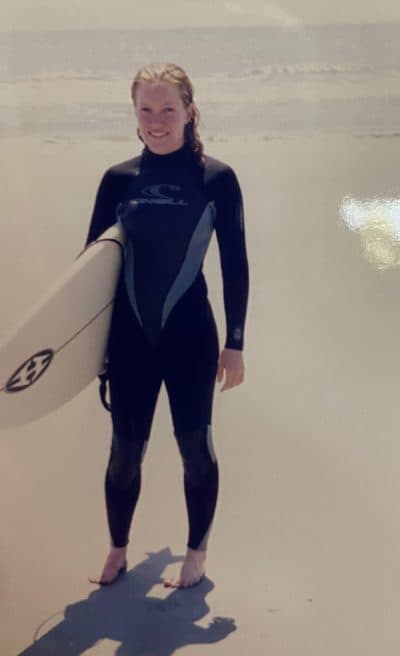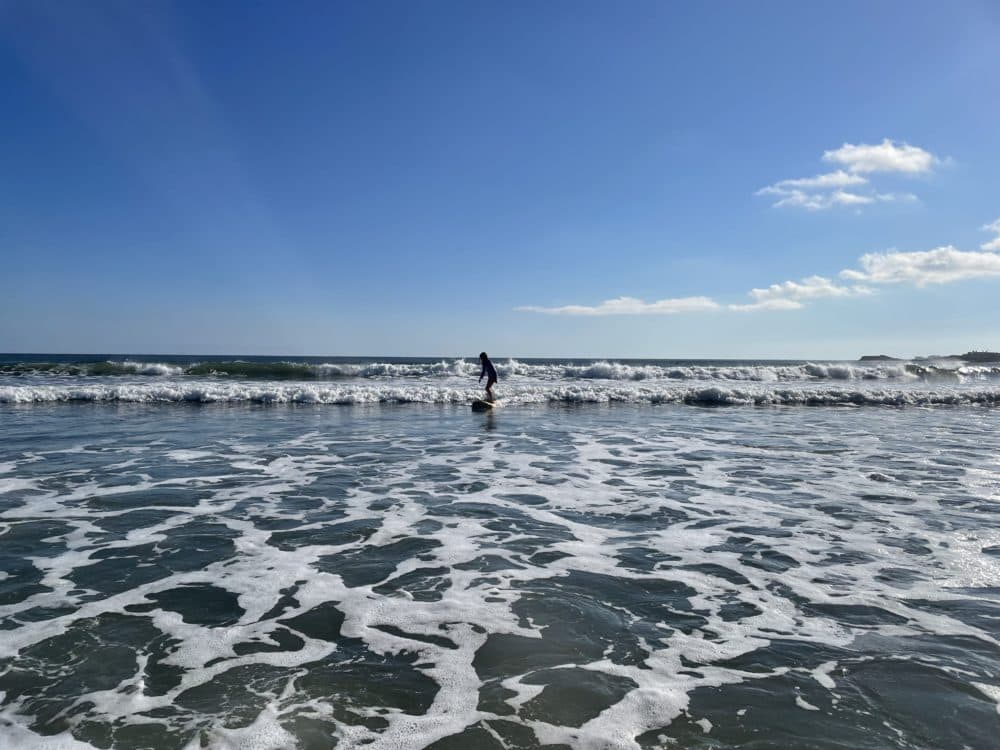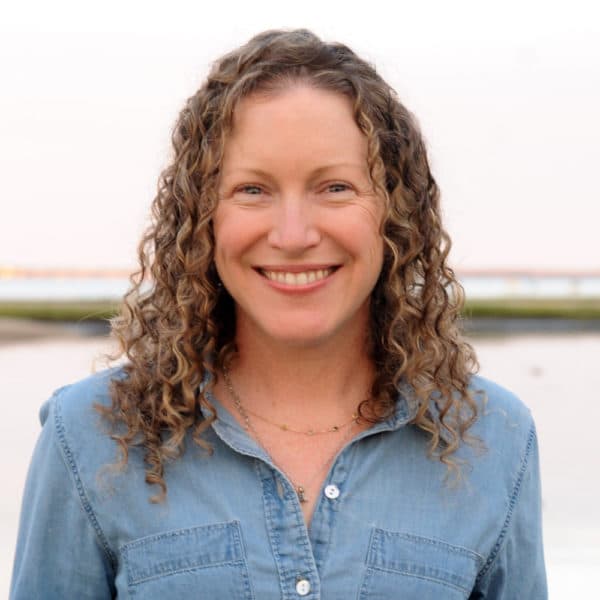Advertisement
Commentary
When I'm Out In The Water With My Daughter

It was this summer, when the pandemic seemed to be ending for a minute — and then it wasn’t, and then it really wasn’t — that I realized how little autonomy I felt beyond my TV remote, how over the last 18 months, that had become my new normal. While my kids continued to grow and change, I couldn’t remember what it felt like to do anything but react. My decision fatigue is real, and my burnout has burnout.
So, in August, as vaccination rates stalled, the delta variant ran rampant, and my doctor husband was back to treating an emergency room full of patients, I bought my daughter a surfboard.
It feels like I started the pandemic with one set of kids and am managing it now with another. In April 2020, my daughter was still content to watch cartoons with her then 3-year-old brother. In what feels like a time warp, he’s in kindergarten now, and she’s in middle school. Our pandemic reliance on musicals has morphed from “Dear Evan Hansen” sock puppets to knowing glances when we listen to the “Rent” soundtrack in the car.
Meanwhile, I slouched into middle age and fear I now associate things like jeans and leaving the house with my thirties. To be honest, I don’t quite recognize any of us.
As I prepped binders and backpacks for this third pandemic school year, I listened to Judith Warner’s dissection of middle school, “And Then They Stopped Talking To Me.” She explains that a significant piece of how we react to our kids’ experiences in middle school is tied to our own seared-in memories of those years. So, let me just go ahead and say it: I was a substantially awkward middle schooler. I was a tomboy, a bookish only child who lived largely in my head and had no idea how to inhabit my body as it changed.
It feels like I started the pandemic with one set of kids and am managing it now with another.
Then when I was 14, I taught myself how to surf. My dad bought me a used board, a 6’2” with orange and yellow dolphins layered in a pattern to resemble a curling wave. He drove me to Virginia Beach every weekend; we’d arrive in the morning and stay until I could no longer move my arms. No one I knew surfed, and I was oblivious that the spot where I flailed for an entire summer — watching boys younger than me with tan chests and long blond hair catch wave after wave — was known as “the zoo.” In my one-piece swimsuit and clashing maroon men’s boardshorts that hung on my hips, I was often the only girl.

As I got stronger, I learned how to push my board under oncoming waves instead of letting it spin out behind me like a fiberglass torpedo. I became an expert at wipeouts. Then one day, finally, I popped up and rode a wave all the way to shore. I whooped. Loudly. An older surfer, a man my dad’s age, smiled as I paddled back out. We both knew what had just happened.
While it would be years before I understood that baggy Quiksilver t-shirts would not a high school boyfriend get, surfing helped me feel at home in my body in a new way, grounded in what I could do, not just how I looked. A friend recently quoted Zadie Smith in reference to why we write: “it’s something to do.” From eighth grade on, I was a surfer — surfing was something to do with a body, and an identity, that felt unwieldy. Plus, it was just really fun. Turns out, it’s still really fun.
The board I bought my daughter is an 8-foot soft top, and, unlike my first board, it floats like a champ. It’s bright yellow; we call it the banana. After sliding it between the seats of my minivan in the surf shop parking lot, we drove straight to the beach. I showed her how to balance her weight laying down, how to arch her chest when she paddled — to look forward instead of down. I pushed her into a handful of waves, then she quickly took over. She intuits now to paddle a beat or two longer than seems necessary, until she feels the wave take over and carry her.
Advertisement
The first time she pushed herself up, found her feet underneath her and rode into shore, I whooped. Very loudly.
Unlike when I learned to surf, she’s not the only girl we see at our local Rhode Island break. And while I grew up idolizing male pro surfers like Kelly Slater, my daughter’s face lit up watching Carissa Moore win the first Olympic gold medal in women’s surfing, hours after riding her own first wave.

Since the start of the pandemic I’ve returned countless times to this letter that the writer George Saunders wrote to his students — it’s my Ted Lasso “Believe” sign. He implores them to keep an open heart, and he says:
I’m trying to practice feeling something like, ‘Ah, so this is happening now,’ or ‘Hmm, so this, too, is part of life on Earth. Did not know that, universe. Thanks so much, stinker.’
And then I real quick try to pretend that I didn’t just call the universe a ‘stinker.’
You’re never really in control when you’re surfing, but sometimes the ocean and your board and your body align to do something that feels pretty darn great. It’s fleeting, and lovely, and it too is part of life on Earth.
When I’m out in the water with my daughter now, or wiping sand from our feet at the car, or getting a frozen lemonade in the parking lot and sipping it in our grimy bathing suits, I feel like an entirely different version of myself than the one who’s been stuck inside the house, just getting through, for the past 18 months. What a gift that surfing is once again something to do.
My friend George Saunders goes on to say, “the world is like a sleeping tiger and we tend to live our lives there on its back.” You could fill an ocean with all that I still can’t control, but after keeping my daughter so close, it’s wonderful to see her paddle away from me. It’s something we can share, and something I can give her, something that’s now hers to carry as she grows up — along with all the other stuff, the normal and the unfathomable.
I hope it helps her keep her heart open. It’s helped me open mine back up again.
